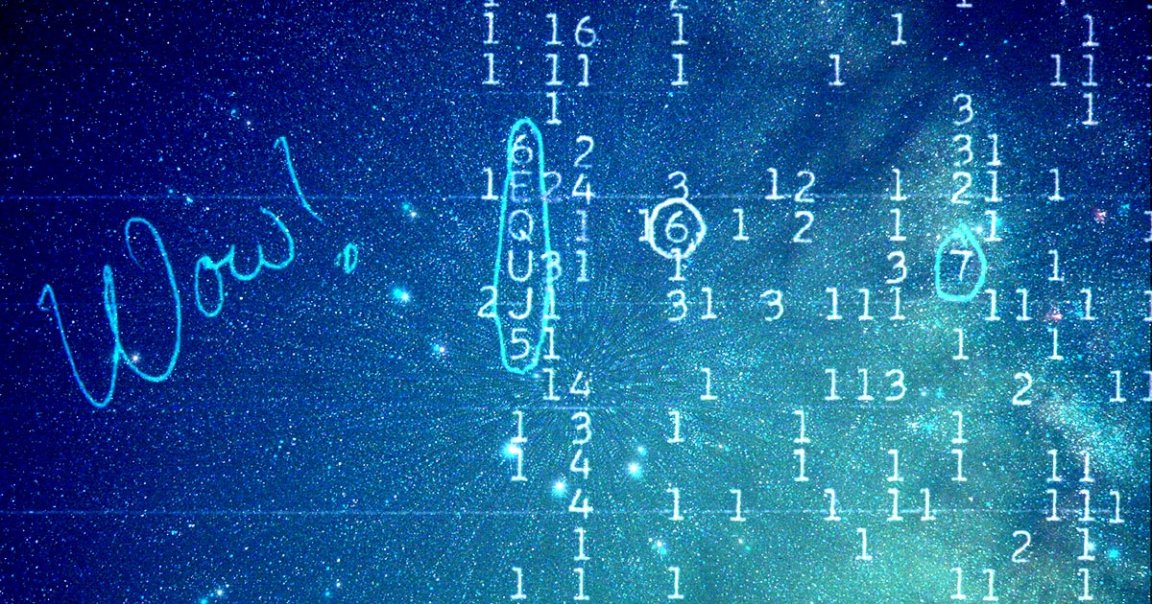
A controversial new study zeroes in on a possible — and potentially habitable — star system candidate that may have been the origin of the “Wow! signal,” one of the biggest mysteries in astronomy that has puzzled scientists ever since its detection in 1977.
The signal, a 72 second data sequence of narrowband radio waves, first observed by Jerry Ehman using the Big Ear radio telescope at Ohio State University 43 years ago, was so unusual that Ehman jotted “Wow!” in the margin of its printout.
Decades later, researchers still have no idea where exactly the signal came from or what caused it, prompting a number of theories over the years, ranging from it being a pair of comets passing by — which was debunked days later — to wild speculation about it being proof that we are not alone in the universe.
Now, astronomer Alberto Caballero searched through data collected by the European Space Agency’s Gaia space observatory to hone in on a star system candidate of where the signal could be coming from, as detailed in a new paper published in the International Journal of Astrobiology.
The goal was to determine if there were any habitable star systems within the region where the Wow! signal appeared to be coming from, working from the assumption that “it came from a star system similar to ours,” according to the paper.
Caballero managed to narrow down his search to a single Sun-like star called 2MASS 19281982-2640123, located 1,800 light-years away in the constellation Sagittarius.
“There is a solar analog in the region where the most alien-like signal has come from,” Caballero told Inverse.
“Despite this star is located too far for sending any reply in the form of a radio or light transmission, it could be a great target to make observations searching for exoplanets around the star,” he wrote in the paper.
“This star has an estimated temperature only five degrees higher than the Sun, and a radius and luminosity almost identical,” he argued in a 2020 YouTube video on the subject (yes, he’s been floating this theory for a while).
While it’s certainly a bit of a stretch — Caballero makes some rather sweeping assumptions to arrive at his candidate — other astronomers say it’s not as crazy as it sounds.
“I think this is perfectly worth doing because we want to point our instruments in the direction of things we think are interesting,” Rebecca Charbonneau, a Harvard-Smithsonian Center for Astrophysics historian and SETI expert who was not involved in Caballero’s research, told Live Science. “There are billions of stars in the galaxy, and we have to figure out some way to narrow them down.”
Charbonnaeu did, however, note that limiting the search to habitable stars that resembles our own may have been the wrong move.
“Why not just look at a bunch of stars?” she asked.
It would take hundreds of years for a signal to make its way to 2MASS 19281982-2640123 from Earth, making it very difficult to return a sign of life — that is, if the Wow! signal both came from there and was sent by an extraterrestrial civilization.
It’s a tantalizing conclusion that should, of course, be taken with a healthy grain of salt.
But our search for other intelligent life in the universe needs to start somewhere, right?
READ MORE: Study Narrows Down Possible Source Of WOW! Signal To Potentially Habitable Sun-like Star [IFL Science]
More on the signal: Astronomer Who Discovered The “Wow!” Signal Says We Still Don’t Understand Its Origin